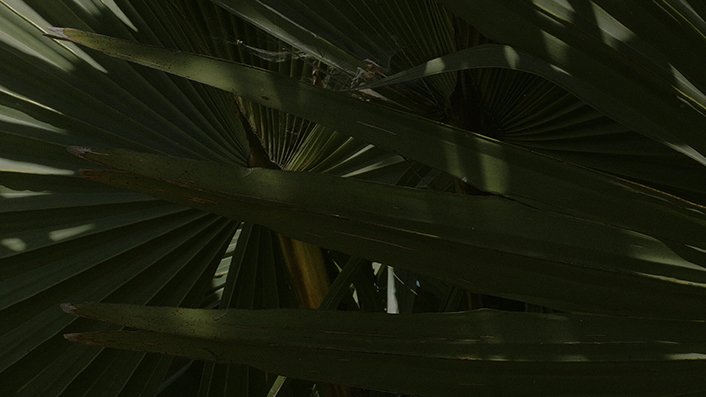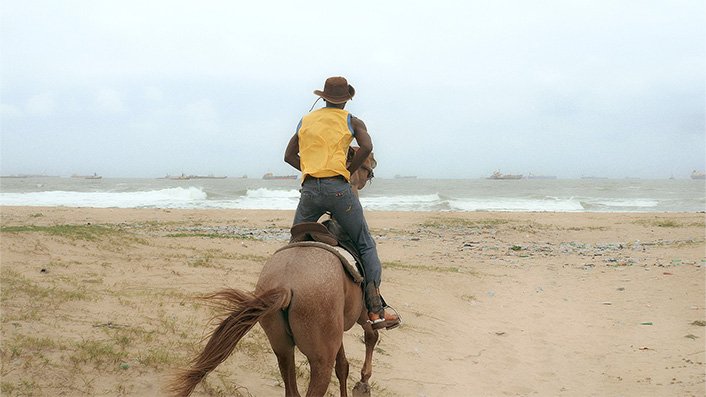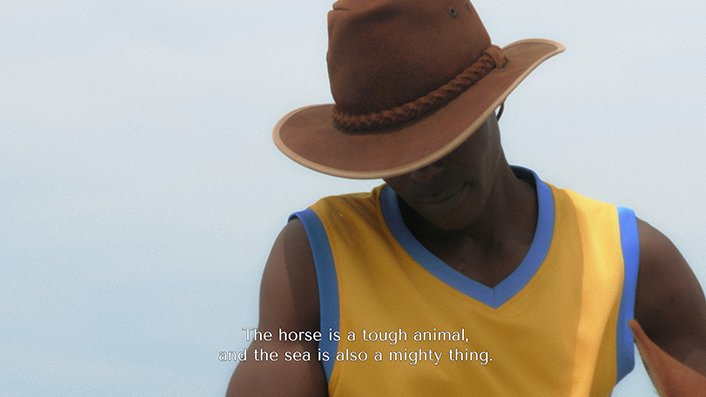




COWBOY
Two channels – on the left we see contemplative images of palm trees swaying in the wind and rushing ocean waves. The right screen introduces us to a man named “Cowboy” who has dedicated himself heart and soul to the care of horses. We see him tending to his horses while he talks about his life, his origins and his emotional connection with horses. In relation to the vastness of the sea which features as a motif throughout the work – in both image and sound, this feeling becomes tangible for us: Freedom and Independence.
In one scene, “Cowboy” sits elevated on his horse and confronts the camera with his gaze. This hierarchy of looking is particularly captivating as he rides, seemingly encircling and homing in on us. The other screen remains dark for this moment and the gesture is intensified; his gaze captures us completely. When he’s not looking directly into the camera, he turns his back on us.
The churning grey sea featured throughout one channel culminates in “Cowboy” riding to meet it in the other channel. In this meeting he stops just shy of the shore, never really venturing in.
Though there are sentiments of freedom in its undulating vastness, underlying however, is the sea as a witness of carnage such as the transatlantic slave trade, or as a passage for undocumented migration.
As the film ends and waves surge out to shore, involuntarily we reflect once more on these associations.
In the interplay with the palm trees, through whose leaves the sunlight breaks, the feeling of freedom prevails again. The palm frond stands as a symbol of victory, peace and independence since ancient times.
Director, Location Manager and Editor: Karimah Ashadu
Camera: Aigberadion Israel Ikhazuangbe
Location sound recordist: Anthony Monday
Sound Adjustments :Jochen Jezussek
Acknowledgements:
With special thanks to Cowboy
Supported by Behörde für Kultur und Medien Hamburg

